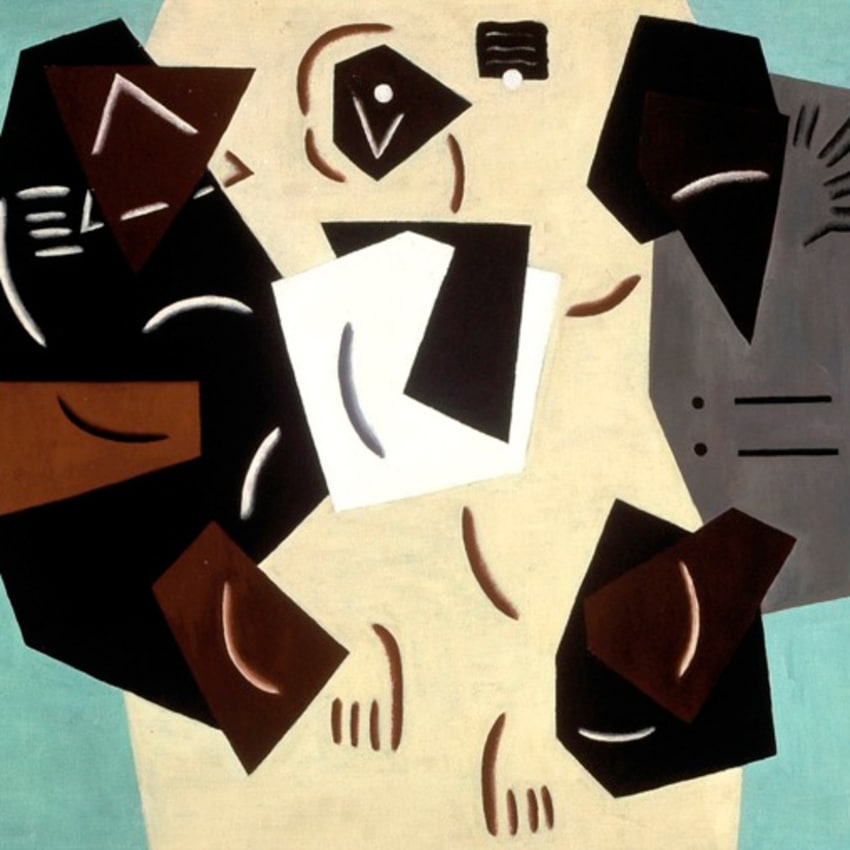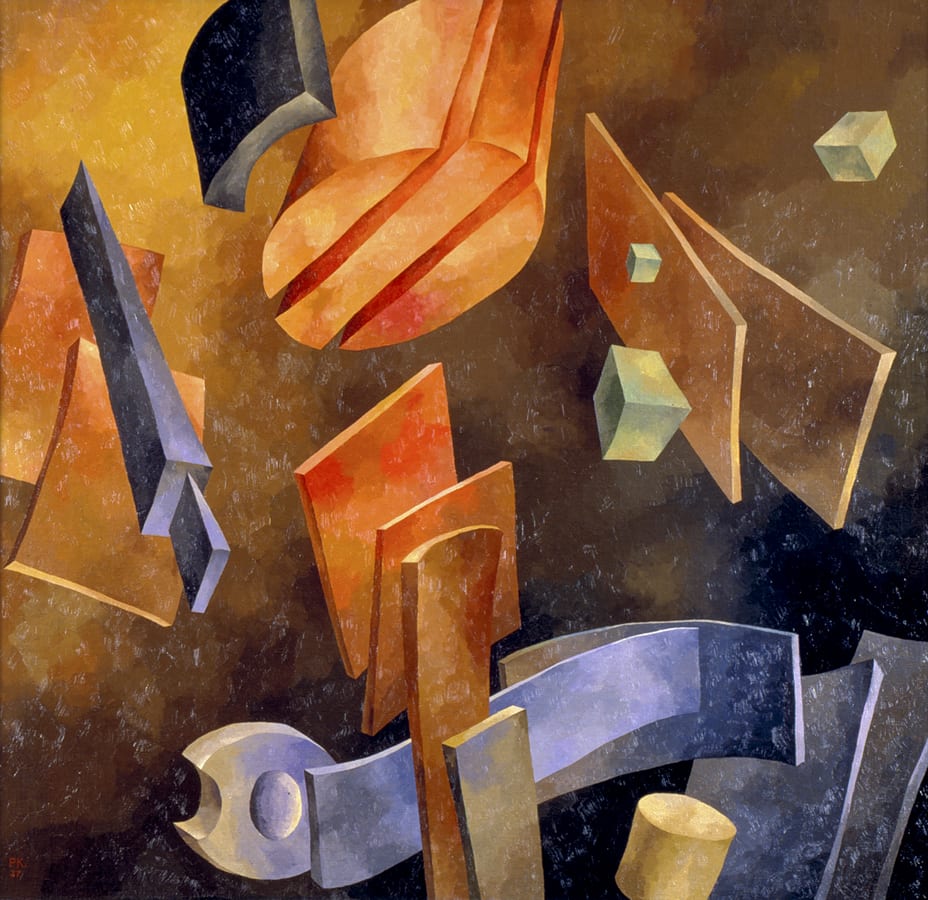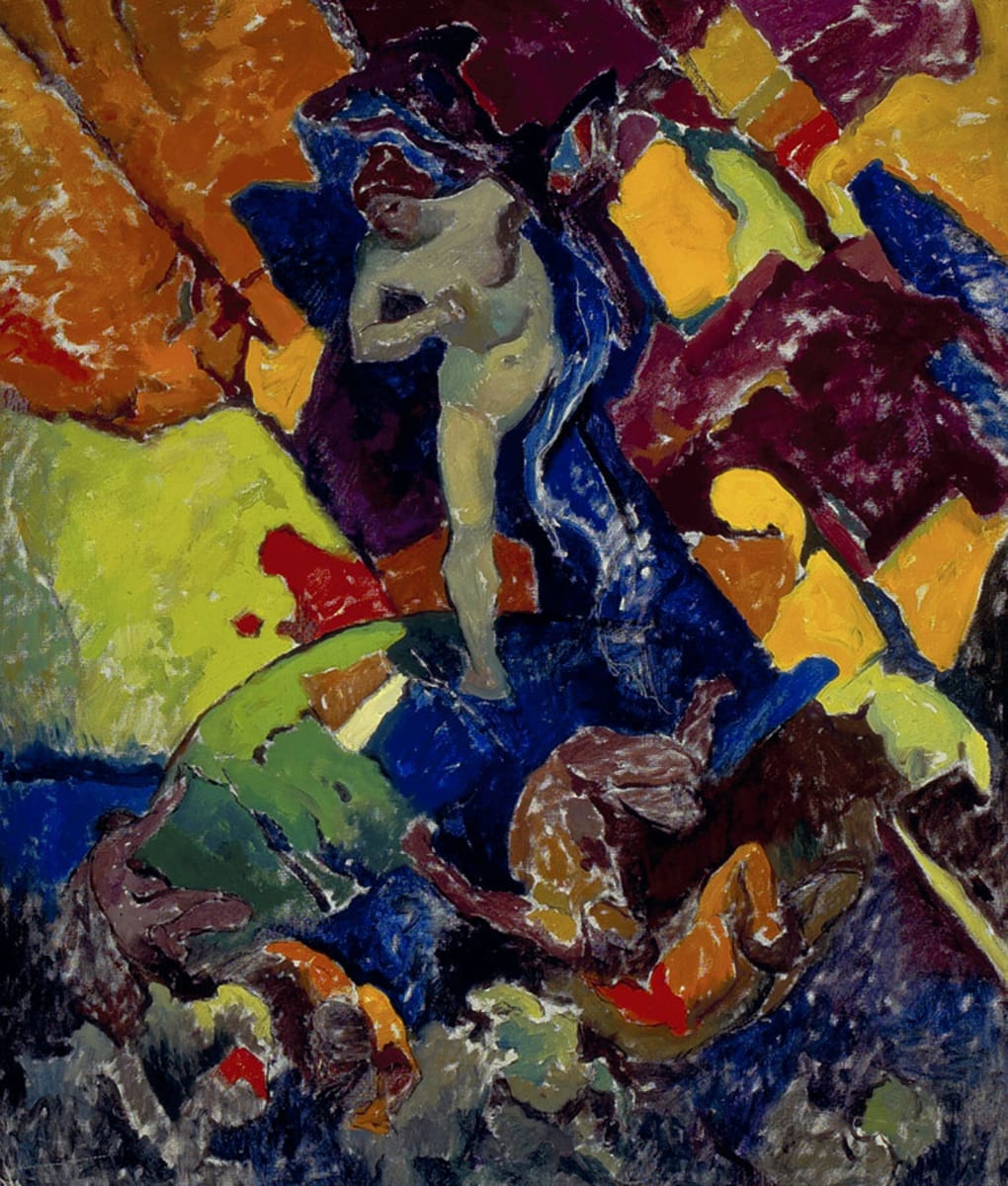
this exhibition stands as a celebration of a new appreciation for American modernism.
The Patty and Jay Baker Naples Museum of Art, under the pioneering leadership of Myra Janco Daniels, in association with Hollis Taggart Galleries presents “Order and Intuition: American Abstraction from the Patty and Jay Baker Naples Museum of Art, 1913-1954,” on view from September 18 to October 25, 2008. Featuring key pieces from the collection of Ahmet Ertegun, which the museum purchased in 1999, this exhibition stands as a celebration of a new appreciation for American modernism.
The Patty and Jay Baker Naples Museum of Art, which opened its doors in 2000, has approximately 2,300 objects in its permanent collection. It is located in the same complex as the Philharmonic Center for the Arts, thus offering the public a seamless experience of the visual and performing arts. This echoes Ertegun’s shared commitment to modern art and music.
The Patty and Jay Baker Naples Museum of Art, under the pioneering leadership of Myra Janco Daniels, in association with Hollis Taggart Galleries presents “Order and Intuition: American Abstraction from the Patty and Jay Baker Naples Museum of Art, 1913-1954,” on view from September 18 to October 25, 2008. Featuring key pieces from the collection of Ahmet Ertegun, which the museum purchased in 1999, this exhibition stands as a celebration of a new appreciation for American modernism.
The Patty and Jay Baker Naples Museum of Art, which opened its doors in 2000, has approximately 2,300 objects in its permanent collection. It is located in the same complex as the Philharmonic Center for the Arts, thus offering the public a seamless experience of the visual and performing arts. This echoes Ertegun’s shared commitment to modern art and music.
The 300 works from Ertegun’s collection now comprise the core of the Patty and Jay Baker Naples Museum of Art’s American modernism holdings and reflect Ertegun’s inimitable approach to assembling subjects and themes. The thirty works on view in the present exhibition were purchased directly from Ertegun and are related to others in the museum’s American modern holdings. They are being presented to collectors for acquisition so as to enable the museum to raise funds to expand the breadth of its collection.
The son of a Turkish ambassador, Ertegun co-founded Atlantic Records in 1947 and went on to become one of the most important figures in the history of twentieth-century music. Ertegun launched and guided the careers of countless music legends with an impassioned dedication that visibly resonates in the extraordinary collection of fine art on view. This work speaks to the full range of Ertegun’s artistic sensibilities.
Ahmet Ertegun displayed a shrewd interest in purchasing American modernism in its various forms. In its entirety, the Naples collection presents Ertegun’s vision, traces the developments in American abstraction, concentrating on the vital period of modernist innovation beginning around 1910 and then focusing on the achievements of the American Abstract Artists group from the1930s into the1950s.
While the work of American Abstract Artists, including paintings by Albert Eugene Gallatin, Werner Drewes, John Ferren, Vaclav Vytlacil, George L. K. Morris, Dwinell Grant, Ilya Bolotowsky, Burgoyne Diller, and Albert Swinden, forms the heart of the collection, the Naples Museum of Art also acquired works by other lightning-rod figures who helped shape the development of American modernism. These include Morgan Russell, Manierre Dawson, Arthur Dove, and Oscar Bluemner.
Bluemner, a staunch promoter of American modernism who was for a brief time in the orbit of the Stieglitz circle, combines streamlined Cubist form, brilliant Fauve color and a vision of the American industrial landscape in his archetypal work Pagoda, 1927. This remarkable painting, echoing the objectives of contemporary precisionists such as Charles Demuth, skillfully abstracts the forms of the American water tower. Bluemner employs the flattened space and monumentality found in the Japanese print, an art form that provided rich source material for many modernists.
Bluemner’s approach appears, in the collection, alongside the work of Morgan Russell. Co-founder, along with Stanton MacDonald-Wright, of American Synchromism, Russell pursued very different objectives in his work. If Bluemner found inspiration in industry, Russell helped to devise an aesthetic theory in which color harmonies, like musical harmonies, define the structure of the composition. Russell’s Synchromy No. 6; Study for Eidos (1 of 4 Parts) creates a melody of colors from pink, yellow, blue, red and orange, to deeper browns and earth tones. While the title itself suggests a musical composition in its reference to multiple parts, the color segments within the painting unfold in wide, vertical undulating lines with the energy of a musical refrain. The resulting connection between the visual and the sonic would, presumably, have appealed to the collector’s own musical expertise.
Musical theory provided only one of many inspirations for investigations into color and form. The Chicago artist Manierre Dawson probed the workings of abstraction through his interest in the creative forces of nature and the dynamic movements of the human figure. His painting Twelve of 1913 exhibits his exposure to the avant-garde trends Dawson saw that year. In particular, this work compares to one of the most important paintings of 1912, Marcel Duchamp’s Nude Descending a Staircase. Dawson seems to carry Duchamp’s dissolution of the figure further, creating an overall composition with energized organic shapes that only loosely reference representational objects.
The vital force of organic forms also infuses Arthur Dove’s Deep Greens, 1942. Here orange, turquoise and green vegetal and biomorphic shapes appear to float, reflected in a deep pool of water. One of America’s foremost modernist painters and one of the first to experiment with abstract forms in his art, Dove took the natural world as his inspiration throughout his career, continually striving to simplify nature to its essence.
Along with modern masters such as Dove, the Naples collection features the works of the American Abstract Artists. They are represented by both the archetypal, colorful, geometric abstraction typically associated with this group as well as by other examples that highlight the diversity of the group’s artistic production. Paintings by Gallatin, Morris and Drewes underscore the diverse dialogue between European and American modernism. A collector of works by Charles Sheeler, Piet Mondrian, Pablo Picasso and Fernand Léger, Albert Eugene Gallatin created his Composition #78 (April 1936), 1936, of brightly colored interlocking and overlapping shapes. In this respect, the painting evokes Léger’s mechanically inspired forms and the Cubist collage aesthetic.
A collaborator with Gallatin, as well as a founding member of the American Abstract Artists, George L. K. Morris also experienced European modernism first-hand. He met Picasso, Georges Braque, Mondrian and Jean Arp during a trip to Paris in 1929. Inspired by this experience, his Balinese Dancers, 1934, abstracts the figures’ movement into several jagged geometric planes, as if energizing and activating the forms that Arp had cut and dropped by chance.
Whereas Gallatin and Morris had connections to the French avant-garde, Werner Drewes was a student at the Bauhaus before coming to America. His Aerial Display, 1941, a composition of interpenetrating triangles and circles, reveals the artist’s innovations upon the theories of his friends Wassily Kandinsky, Josef Albers and László Moholy-Nagy. The tenets of both Constructivism and Surrealism also informed the abstraction of Russian-born Ilya Bolotowsky, whose Untitled, circa 1937, combines biomorphic and geometric forms.
Working for the New Deal Works Progress Administration Federal Art Project, Bolotowsky created murals under the leadership of Burgoyne Diller, who supervised the mural division. A student of Hans Hofmann, Diller was also aware of the Bauhaus work of Kandinsky and the painting of Mondrian. Second Theme, 1949-54, exhibits Diller’s continued fascination and experimentation with Mondrian’s vocabulary of primary colors and linear, geometric form. A friend of Diller, and a fellow student of Hofmann, Albert Swinden also devised a geometric style, which he developed in a WPA mural commission. In Abstraction, circa 1935-40, he breaks down a tabletop still-life scene into clean, angular planes and colorful surface patterns, asserting the flatness of the canvas while still maintaining a dynamic sense of spatial depth.
In addition to paintings that are iconic examples of American Abstract Artists production, works by Dwinell Grant, John Ferren and Vaclav Vytlacil provide additional insight into the scope of the imagery produced by this groundbreaking group. Less well known than many of his colleagues, Grant’s paintings were rarely exhibited. The artist supported himself, throughout the forties, through film projects and medical illustrations. In Depth I, 1947, highlights his skill as a draftsman as well as his mastery of the principles of modernist abstraction. John Ferren and Vaclav Vytlacil, renowned for their brilliant geometric abstraction, also produced soft, organic, biomorphic work and semi-abstract city scenes. Ferren’s Abstract Composition, 1935, features amoeba-like shapes in translucent colors float on a neutral field. Vytlacil’s New York Harbor, 1931-32, oscillates between Abstraction and Realism. He simplifies the forms of buildings, wagon wheels and smokestacks to create a scene that, despite its familiar subject, is infused with mystery.
The paintings on view in “Order and Intuition: American Abstraction from the Patty and Jay Baker Naples Museum of Art, 1913-1954,” provide a fascinating overview of American art during the war years, a vital period during which European and American artistic innovations converged. As émigrés fled Europe, New York began to emerge as the new cultural leader, with members of the Bauhaus and Surrealist groups spurring fresh dialogue and experimentation within the American avant-garde.
News

















